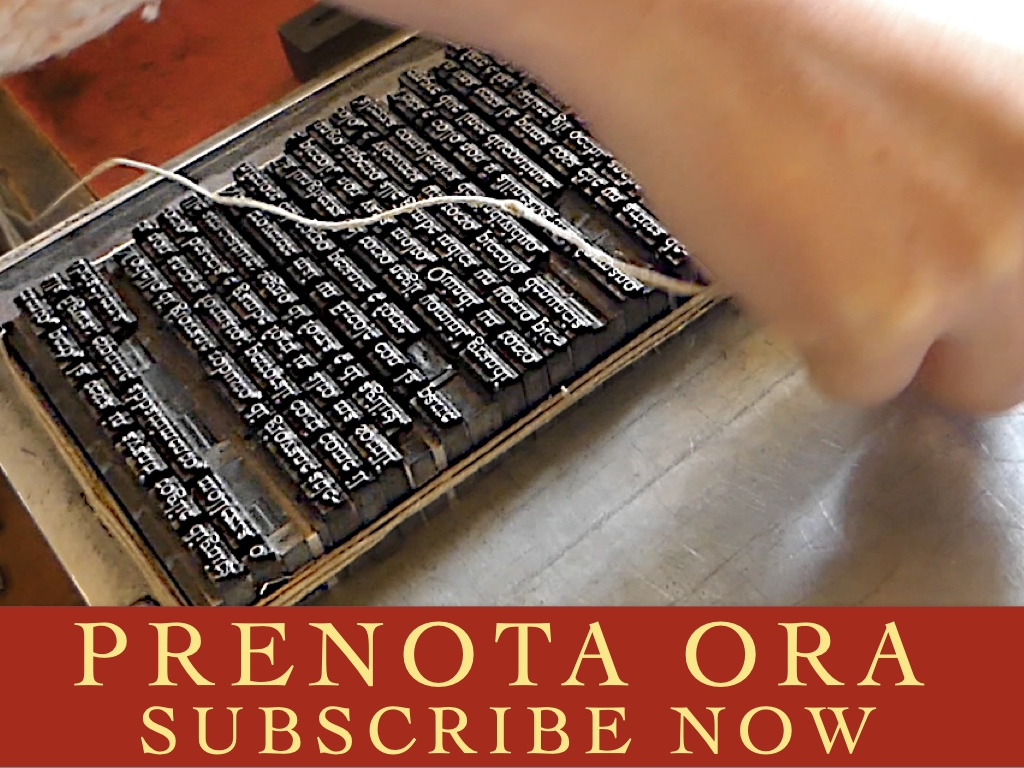PRINT RUN
This edition will consist of 209* copies altogether, of which 114 copies printed on Ingres paper, 85 copies on Bugra paper, and 1 copy on handmade paper.
(*) The printing and binding process might cause a slight change in the expected print run size.
Ingres paper is called by this name because it was the type of paper that Ingres preferred for his drawings, which Canson & Montgolfier was already making in his time, and which is still made today. In particular, Ingres paper is a laid paper, a type of paper having a ribbed texture imparted by wire lines and chain lines clearly visibile by transmitted light.
Similar to Ingres paper, Bugra laid paper features a less pronounced wire pattern embedded into the paper.
Both Ingres and Bugra are acid free, long-life papers.
More in detail, the print run is broken down as follows:
. 70 copies will be printed on white Bugra paper by Hahnemühle, Germany (250€: special price until June 15th; then the price will be 300€).
. 70 copies will be printed on white heavy Ingres paper (150 g/m2) by Hahnemühle (270€: special price until June 15th; then the price will be 320€).
. 30 copies will be printed on sky gray Ingres Vidalon paper by Canson, France (320€: special price until June 15th; then the price will be 380€)
. 24 copies will be printed on gray Bugra paper by Hahnemühle (350€: special price until June 15th; then the price will be 420€).
. 14 copies will be printed on pinkish-gray Ingres Vidalon paper by Canson (400€: special price until June 15th; then the price will be 470€).
. only copy not for sale.
***
Italian edition. Translation from French and postface by Elena Pontiggia.
Ingres identifies art with beauty, and deplores the expansion of the aesthetic sphere to the ugly and the negative. He senses the limits and risks of all modern art, that is, of an art intended as a means of individual expression, rather than a means of objective representation.
Few pages are as pervaded by a metaphysical tension as these: they are not about the art of Ingres’ time, but address the art without time and without adjectives, the art that is “eternal and unique”, as unique and eternal is the beauty of nature.
Ingres spent the most important period of his artistic activity in Italy. In Rome, where he became director of the French Academy at Villa Medici, he defined his style by studying the ancient and Raphael.
***
Book format: 8vo (15,5 x 28cm). A volume of 120 pages typeset by hand in 14 and 10 pt Garamond type, hand-cut by Henri Parmentier in Paris and cast by Deberny in 1914.
The Tallone Press does not print from plastic plates (photopolymer cliches) derived from digital compositions, which imitate typographic printing, and are routine in today’s letterpress printing.
In addition, neither monotype nor linotype are used. These typesetting machines represent the mechanization of manual typography, and they have now largely been supplanted by photopolymer cliches.
***
The volume is housed in a hand-made slipcase and box. The book title is letterpress-printed on the slipcase’s spine.
***
“The materials of Art are in Florence, the results in Rome” - Ingres
“Reach back to the masters, talk to them and they will answer you, because they are still alive” - Ingres
“Homer is the origin and model of all Beauty, both in Art and Literature” - Ingres
“They told me that Beethoven used to go for a walk in the surroundings of Vienna to find inspiration. He was almost deaf. One day he kneels down in the street to write what he has just composed in his head. A funeral arrives with a large procession: Beethoven does not move. The worries of his genius, even before his deafness, alienate him from what is happening around him. The funeral stops: “Let's wait for him to finish,” everyone say. What a beautiful homage to this great man! The fact is that genius, when at work, communicates with God himself. This is what the Viennese people, who are supremely religious, think: this is why these people were able to make a dead man bow before a living one without impiety” - Ingres
***
The Tallone Press is one of the very few places where the art of typography in keeping with Gutenberg’s tradition is carried forward unchanged.
Printed on very fine paper and sewn by hand, this collector’s edition is handmade in one of the most ancient typographic studios in the world still in activity, whose foundation dates back to the late 18th century.
Tallone books are a sophisticated, valuable gift meant to last over time.


 Complimentary gift wrapping and personalized message for the receiver available at checkout*
Complimentary gift wrapping and personalized message for the receiver available at checkout*
